Grab a pack of your favorite M&M’s candy and do some fun elementary math activities! We LOVE M&M’s over here. Lining up the colors, the chocolatey taste… And since we always seem to have a kid or two (or three) in orthodontics, this is a candy we can eat that isn’t sticky.
M&M’s also make great math manipulatives!
I created these math activities for kids in 1st – 5th grade. I’ll share them with notes about which grade level each will be best for.
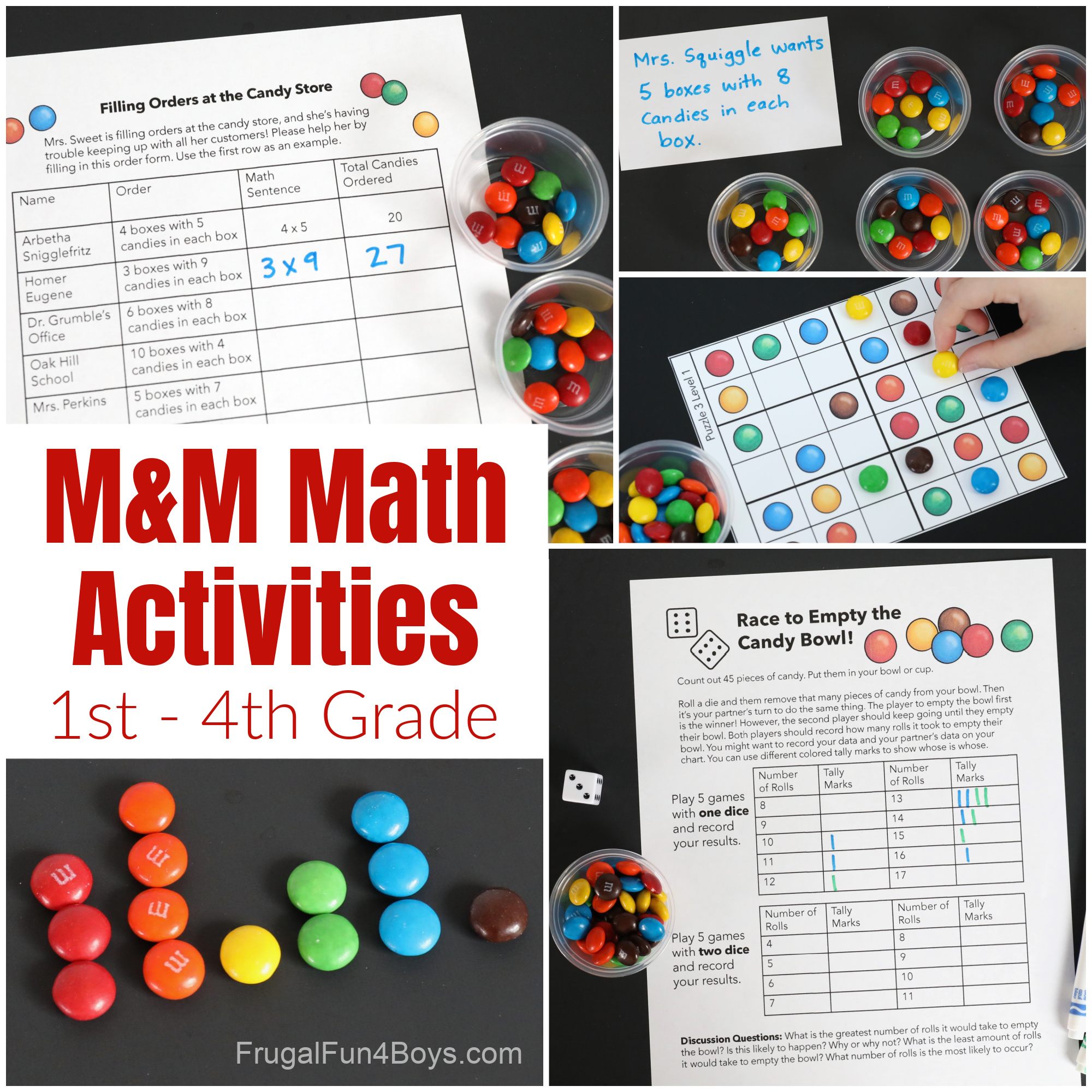
Graph a Pack of Candy
A great way to start is to open up a pack of M&M’s and graph the colors! Simply arrange the M&M’s by color and count them up.
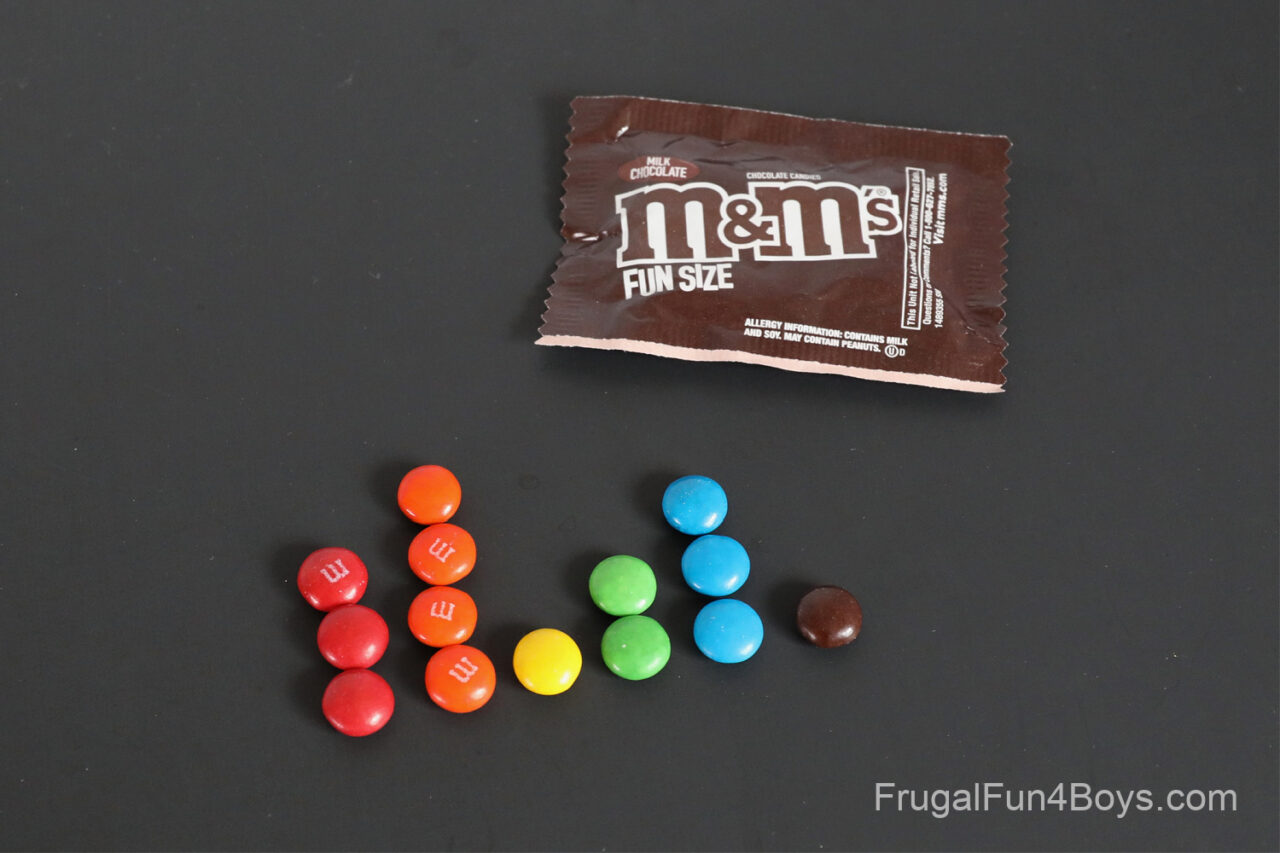
1st graders will enjoy sorting and counting the M&M’s. You can practice addition by adding two colors together. What is red plus orange? Blue plus red? And so on.
But you can take this activity so much farther for older students.
- Open several fun size packs of M&M’s and count the total number of candies in each pack. What is the average number of candies in a pack? What is the mode (the number of candies that occurs most often)? According to your data, is the mode the same as the average?
- Do fun size M&M packs contain equal amounts of the 6 colors? Is one color more plentiful?
Empty the Candy Bowl
The object of this activity is to see how many rolls of the dice it takes to empty the candy bowl.
First Grade Version:
Give each child 45 M&M’s in a plastic cup or bowl. Children can play this game in groups of 2 – 4. Have them race to empty their candy bowls! Each player will roll the dice and remove that many candies from the bowl. Play continues until the first person has emptied their bowl.
Upper Elementary Version:
Give each child 45 M&M’s in a plastic cup or bowl. In this version of the game, all players should keep playing until they have emptied their bowl.
**By giving each student their own cup of candy, they can eat them at the end because they will only be handling their own candy. You’ll want to have them wash their hands before they start this activity.
The goal is to study how many rolls it takes to empty a bowl with 45 candies.
What is the least number of rolls needed to empty the bowl? With a 6-sided dice, it would take a minimum of 8 rolls. If a player rolled nothing but 6’s (highly unlikely), they would have to roll 8 times to completely clear the bowl.
What is the greatest number of rolls needed? You could technically have 45 rolls (if you rolled a 1 every time), but that is extremely unlikely.
What is the average number of rolls needed to empty the bowl? Play this game several times, and you can compile some valuable data!
If you have students work with a partner, they can each play 5 games for a total of 10 games to record on their data sheet. Compile data from the whole class to get even better numbers.
Play 5 more rounds of this game with TWO dice to see how that changes the results!

As we played the game, we found it helpful to lay out the candies by roll, and then at the end we could quickly count up how many rolls we had.
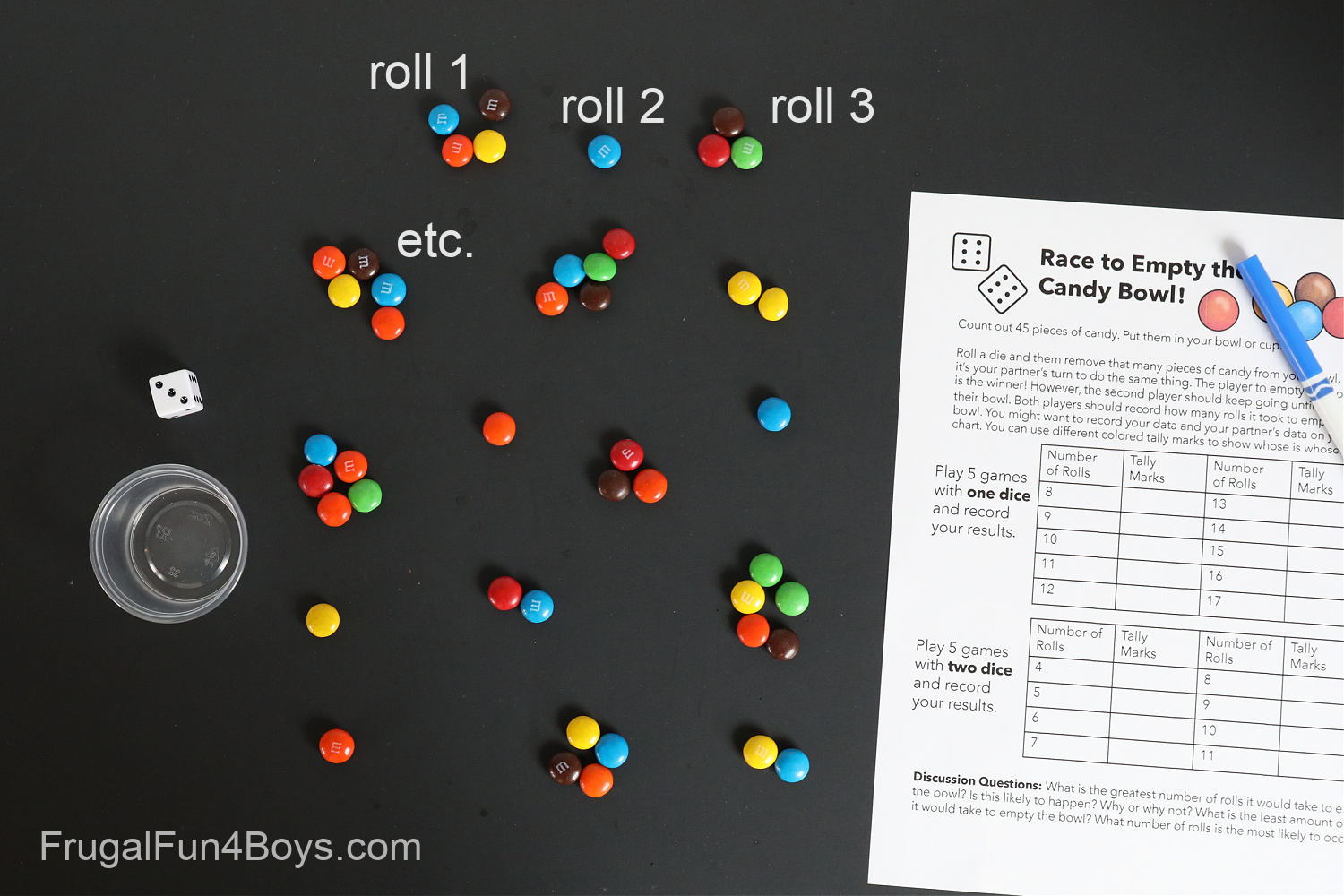
Use classroom data to make a frequency chart!
If you have 15 students and they each play 5 rounds of this game, that’s 75 games. This is enough data to get a bell-shaped curve. You should end up with one or two rolls occurring the most frequently (the mode). Then as you get further away from the peak, the numbers of rolls will occur less and less frequently.
Greatest to Least
Hand out 45-50 M&M’s and organize them by color from greatest to least. This is great for first and second grade!

Candy Store Orders
This is a multiplication game. Play this game with third graders, or with second graders towards the end of the school year.
You can play this game with some sticky notes. This will allow you to customize the difficulty to suit your child. Simply write out some orders for your child to fill! After they have created the order with M&M’s, have them write the multiplication sentence.
For example, Mrs. Squiggle wants 5 boxes with 8 candies in each box. 5 boxes x 8 candies in each = 40 total candies. 5 x 8 = 40
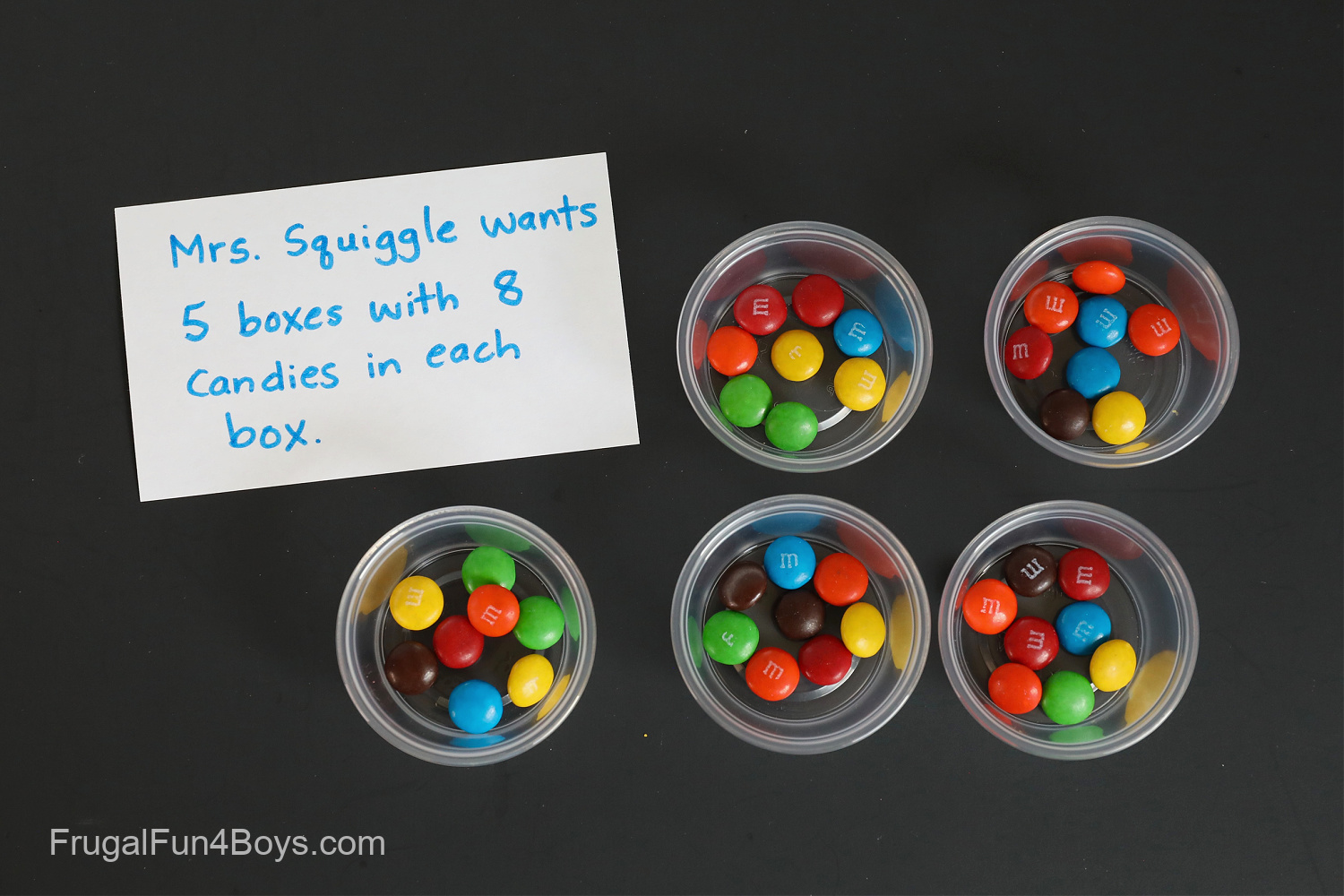
We also have a fun printable page with the orders already created. Kids will fill in the order chart with the multiplication sentence and the total number of candies ordered.
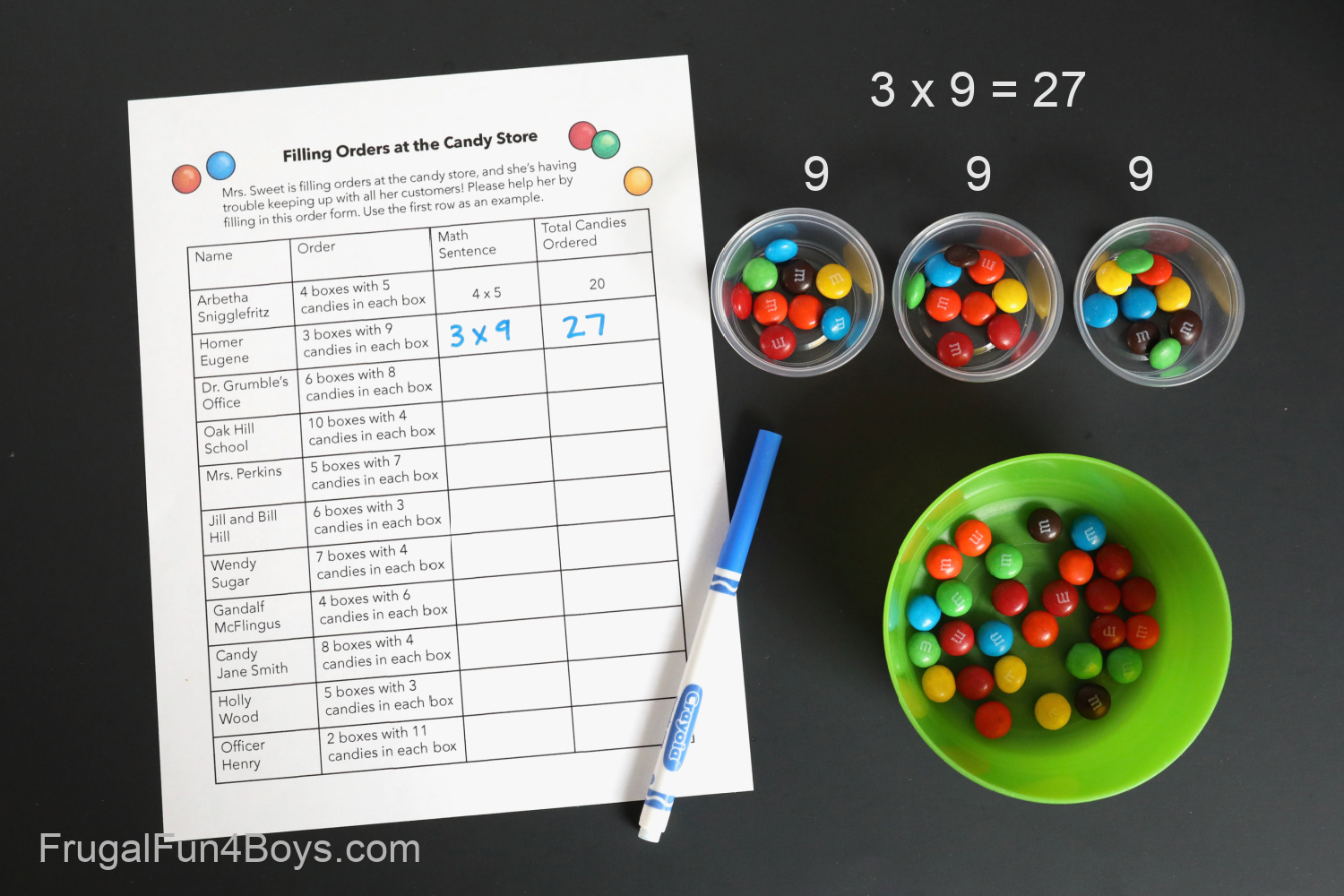
Fractions
It’s so easy to do all sorts of fractions practice with M&M’s!
Ask your student to grab 15 M&M’s and make 1/3 of them red. Or grab 18 and make 1/2 of them yellow. Etc.
4th and 5th graders need to be able to calculate a fractional part of a number. For example, 1/2 of 24, 2/3 of 27 and things like that. Students can figure this out in a hands-on way with M&M’s. For example, lay out 27 M&M’s. To find 2/3, you’ll first need to divide them into three equal groups. Once you know how many are in 1/3 of 27, you can easily figure out 2/3.
M&M’s Sudoku
Play Sudoku with colors instead of numbers! Kids will love this fun logic game.
There are 8 different game boards to print – 4 for ages 5-7 and 4 for ages 8 – 10.
Print the free M&M’s Sudoku game boards here: Candy Sudoku Game Boards
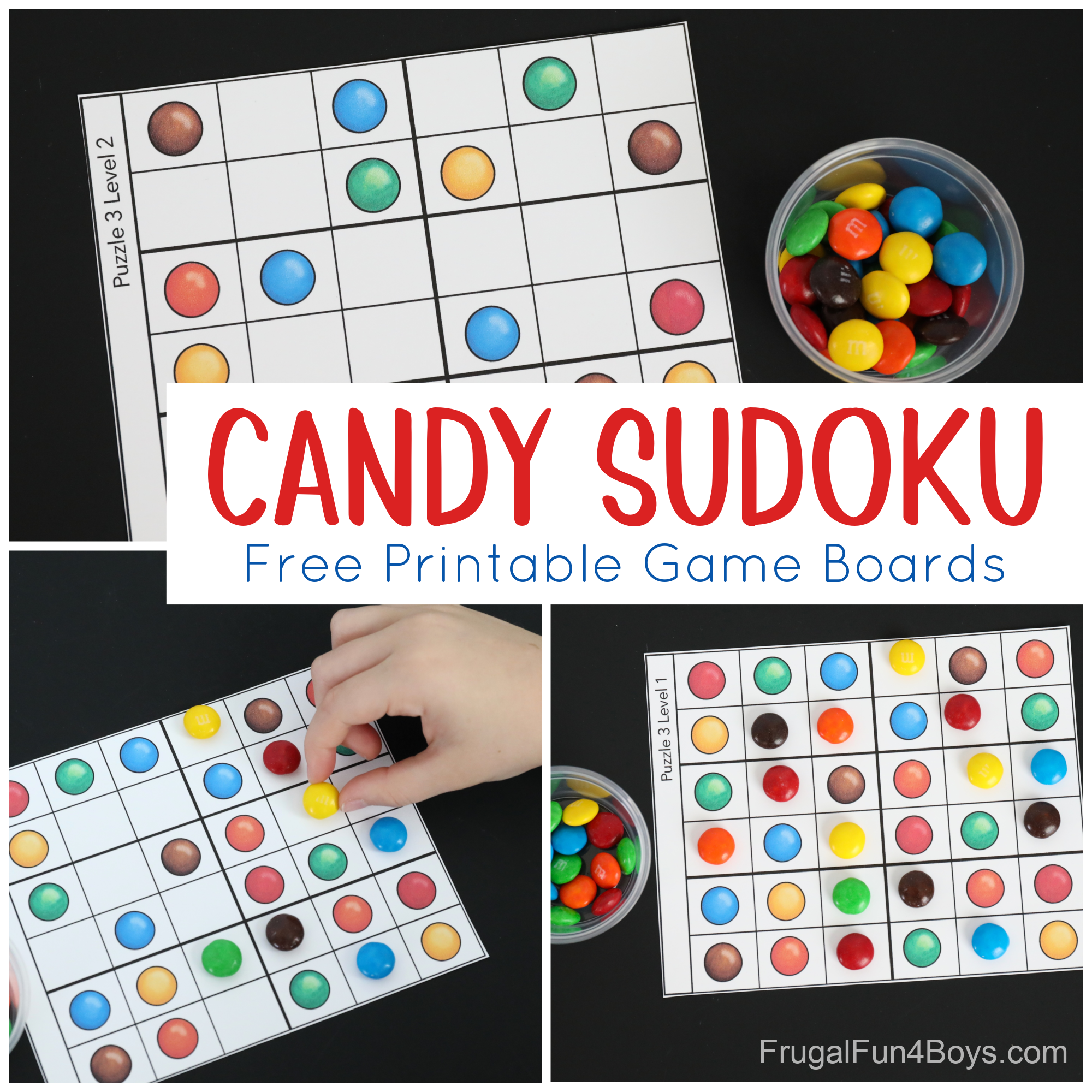
Ready to print your M&M’s Math Activity Pages?
Print the pages for the Empty the Bowl and Candy Store Orders activities. Click the link below. The file will open, and you can print or save from there.
PRINT IT HERE: M&M’s Math Activity Pages
Need more elementary math activities?
You’ll also want to check out our LEGO Math Activities for Elementary Kids!


2 Comments
Dorothy Oct 8, 2023
I was born in the 1950 and math was difficult for me. I hope my great grandchildren (they are less than 3 now.) will enjoy math with your ideas. You always make math fun. Thank you for sharing so many good ideas. I like all the stuff you post. God bless you.
Jennie Nov 2, 2023
Thank you! I have a grandson that is having a hard time with first grade math. I’m not used to dealing with common core curriculum and find some of the words used, like Descartes an algebra term, unnecessary at this point. But you do what is required for them. This will be a fun way to have him do math without knowing he’s doing it. And getting to eat m&ms will be a plus.
Post a Comment